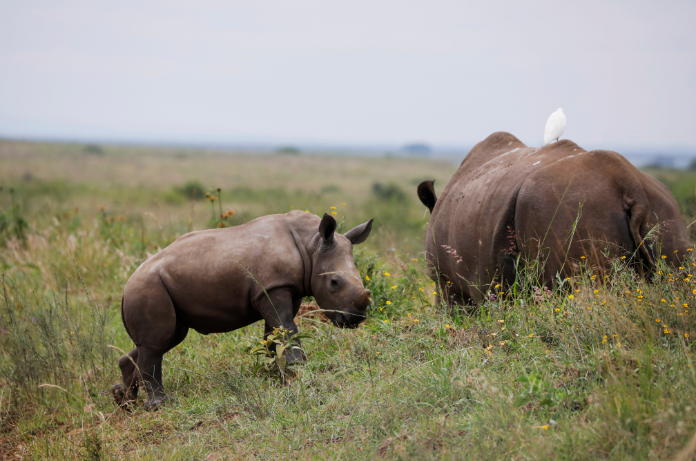It’s hard to ignore the headlines about the alarming decline of global wildlife populations. According to the World Wildlife Fund (WWF), we have lost a staggering 73% of wildlife since 1970. Let that sink in for a moment. This isn’t just a statistic; it’s a cry for help from the natural world. So, what does this mean for us, and why should we care? Let’s dive into the implications of this decline, explore some emotional connections to wildlife, and discuss how we can take action.
Understanding the decline
The statistics from WWF’s Living Planet Report 2020 are shocking and paint a grim picture of our planet’s health. Here are some key figures:
- 73% Decline: Average wildlife populations have decreased by 73% over the past 50 years.
- Species at Risk: Over 1 million species are currently threatened with extinction, according to the UN.
- Habitat Loss: About 1 million square kilometers of tropical forest are lost each year, affecting countless species and ecosystems.
- Ocean Decline: Marine species populations have seen a decline of 39% since 1970.
These figures are not just numbers; they represent a loss of biodiversity that is critical for maintaining healthy ecosystems. Biodiversity is essential for food security, clean water, and stable climates.
The Ripple effect
You might be wondering, “Why should I care?” The decline of wildlife has profound implications for humanity. Here are a few points to consider:
Ecosystem balance
Every species plays a role in its ecosystem. When one species declines or disappears, it affects others. For example, the decline of bees impacts pollination, which in turn affects our food supply. A world without bees could mean no apples, almonds, or blueberries, fruits we often take for granted.
Climate regulation
Forests, oceans, and other ecosystems act as carbon sinks, helping to mitigate climate change. The loss of these habitats accelerates global warming, which affects everyone on the planet. As we lose forests, we lose crucial carbon storage capabilities, worsening climate change and its impacts on extreme weather, rising sea levels, and disrupted agricultural systems.
Cultural significance
Many cultures around the world have deep-rooted connections to wildlife. Losing species means losing a part of our collective identity and heritage. Indigenous peoples often rely on specific animals and plants for their traditions, medicine, and sustenance. The extinction of a species can erase entire cultures and histories.
Emotional connections to Wildlife
When we think about wildlife, we often conjure up images of majestic elephants, vibrant coral reefs, and the call of a howler monkey in a lush rainforest. These creatures evoke emotions like wonder, joy, and sometimes sadness.
Imagine the beauty
Picture this: walking through a dense forest filled with the sounds of birds chirping, or snorkeling in a reef teeming with colorful fish. These experiences connect us to nature and remind us of our place in the world. The beauty of nature has a profound impact on our mental health and well-being, providing us with solace and inspiration.
The pain of loss
Now imagine those forests falling silent or those reefs turning into barren wastelands. This loss is not just an environmental issue; it’s a deeply emotional one. Losing a species can feel like losing a friend. Each extinction leaves a gap in the tapestry of life on Earth, and the thought of future generations never knowing the wonders of nature is heartbreaking.
Some heartbreaking stories
- The Passenger Pigeon: Once abundant in North America, the passenger pigeon went extinct in the early 20th century due to overhunting and habitat destruction. It serves as a reminder of how quickly a species can vanish.
- Rhinos on the Brink: Poaching and habitat loss have pushed many rhino species to the brink of extinction. Each lost rhino represents not only a unique life but also the cultural significance they hold in various societies. The loss of these iconic animals affects tourism and local economies as well.
What can we do?
Feeling overwhelmed? You’re not alone. But here’s the good news: there are steps we can take to help reverse this trend. Here are some actions you can consider:
Educate yourself and others
Knowledge is power. Understanding the issues at hand can motivate you to make changes in your own life and influence others. Read books, watch documentaries, or follow conservation organizations online to stay informed about the latest developments in wildlife conservation.
Support conservation efforts
Organizations like WWF, The Nature Conservancy, and local wildlife groups need your support whether through donations or volunteering. Your contributions can help fund critical research, habitat restoration, and anti-poaching efforts. Every little bit helps.
Choose Sustainable Products
Opt for products that are sustainably sourced. This includes everything from food to clothing. Look for labels that indicate sustainable practices, such as fair trade or organic certifications. Every purchase you make sends a message about the kind of world you want to support.
Advocate for policy change
Encourage your representatives to support environmental legislation. Collective voices can lead to impactful change. Participate in campaigns, sign petitions, and engage with local policymakers to emphasize the importance of protecting wildlife and their habitats.
A call to action
The decline of global wildlife numbers is a collective issue that affects us all. We have the power to change the narrative. Here’s how you can get involved:
- Start Small: Make simple changes in your life, like reducing plastic use or planting native species in your garden. Small actions can lead to big changes over time.
- Spread the Word: Share this information with friends and family. Awareness is the first step toward action. Use social media to amplify your voice and reach a broader audience.
- Join a Local Group: Connect with local conservation groups to see what initiatives you can participate in. Engaging with others who share your passion can make the experience more rewarding.
- Donate: Consider making a donation to wildlife conservation organizations. Even a small contribution can make a significant impact. Your generosity can help fund crucial projects that protect endangered species and their habitats.
In conclusion, the statistics are alarming, but they also serve as a rallying cry. We have a choice to continue down this path of destruction or take meaningful steps to protect our planet and its wildlife.
Remember, every action counts, and together we can create a future where wildlife thrives alongside us.

